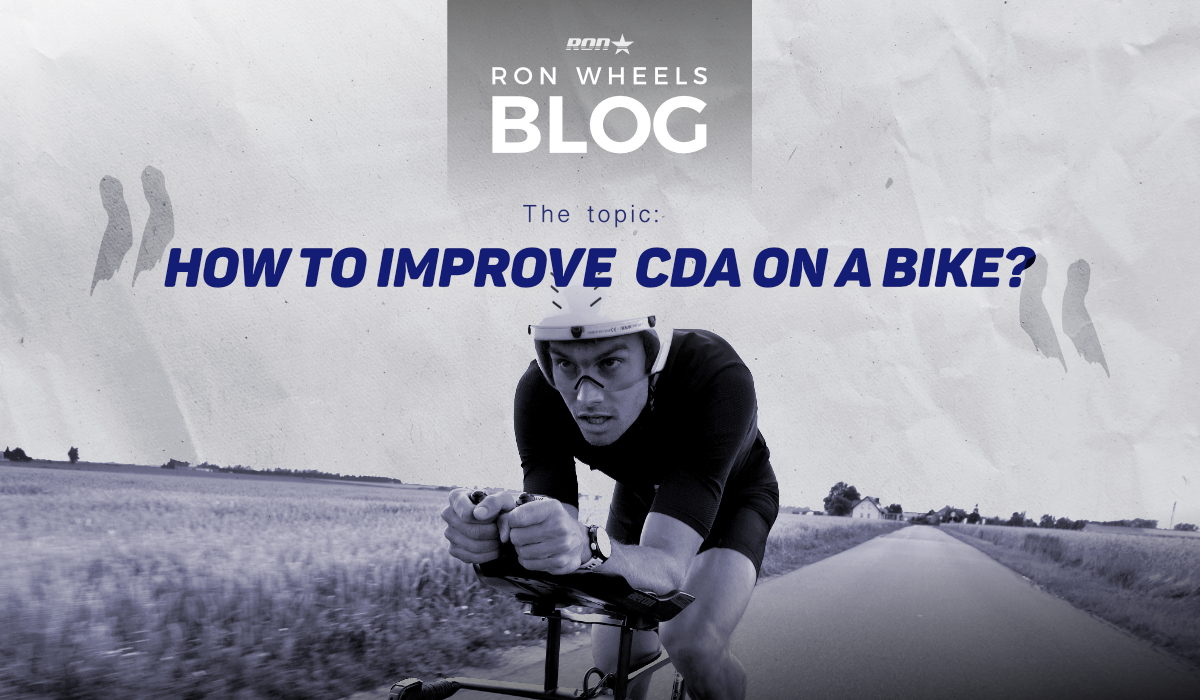How to improve CdA on a bike?

Tips how to be more AERO
CdA
CdA, or the coefficient of air resistance, is the product of the frontal area of a moving object multiplied by the air resistance coefficient. The lower the coefficient, the higher the speed that can be achieved on a bicycle. How to achieve this and gain valuable time? Read on!
As an introduction and for a better understanding of the topic: The smaller the frontal area, the faster you can travel with a given power. CdA can be examined for almost anything, and the frontal area is crucial here. However, one must also consider the shape of the object, its size, and texture.
Change the way you think about a bicycle frame
The vast majority of triathletes believe that since a bicycle frame is a significant expense, it must be the most crucial factor influencing riding speed. Marketers, of course, do everything to reinforce this belief, assuring you that a new fork is more aerodynamic or promising that a new model is much faster compared to its predecessors. Considering that over 3/4 of the frontal resistance comes from the cyclist, not the bike, it's easy to calculate that a slightly more aerodynamic frame, by just 3-4%, practically adds nothing. The ability to adjust the riding position, which significantly affects results, will be much more important. The weight of the bike should also be secondary. Weight differences between manufacturers usually amount to just one kilogram, which on a flat Ironman course translates to a mere 30 seconds of gain!
Riding Position
If you're starting to compete at speeds around 35 km/h or more, you should pay special attention to your body position on the bike. It's not just about lowering it (for some, this may have the opposite effect of what is intended). In races, I always see people switching to the top grip on a straight, fast section (sic!). These are the moments where the highest speeds are reached, and thus, minimizing resistance is crucial. So, the question arises: why do triathletes switch to the top grip when they have aerobars? If it's due to discomfort, a step back should be taken. Perhaps you lack the proper training (too few tasks in the aero position, etc.). Maybe you have an inappropriate setup that doesn't allow you to stay in the aerodynamic position for an extended period. In that case, consulting with a fitter might be worthwhile.

Head Position
Constantly looking around, and tilting your head in an aero helmet can slow you down, even though your intention is to ride faster, not slower. The helmet should almost adhere to your back. If you keep your head high, it should be longer. If lower – shorter.
Importance of the wheels
Wheels are another important factor in terms of aerodynamics. The shape of rims and spokes can impact air resistance. Wheels with a more aerodynamic profile usually generate less air resistance.
In most cases, diskwheel will be the fastest option.
Wheels with deeper rims may improve aerodynamics in calm conditions or with a tailwind. However, crosswinds may make deep wheels more challenging to control. This is why we invented the ULTRON front wheel- which remains stable even in crosswinds.
In the case of wheels and their resistance, an additional factor is matching the tire width to a specific rim.

Hydration and Nutrition
Let's start with the question: "What does body position have to do with hydration?" Well, it has quite a bit. Reaching for water bottles or gels affects the position you assume and how long you stay in that position.
The foundation is a handlebar-mounted water bottle with a straw. Easy access allows you to stay in the aero position, enabling more frequent sips, which is crucial during hot races. It usually doesn't add extra resistance. An important aspect is ensuring the proper placement of gels. Here, pockets in the upper part of the frame work well. With a higher number of gels, it becomes cumbersome, and considering dissolving them in one of the water bottles is a viable option. However, for longer distances, you need at least two water bottles. An aero bottle on the frame is always a good option, although it is generally smaller and less convenient, so it's better treated as a backup. The third option is a mount behind the saddle. Its placement is crucial!
Following these few pieces of advice can truly allow most Age Groupers to shave off at least a few minutes in an Ironman distance and possibly save significant money by avoiding the potential purchase of a new, better frame.


Comments
No comment at this time!
Leave your comment